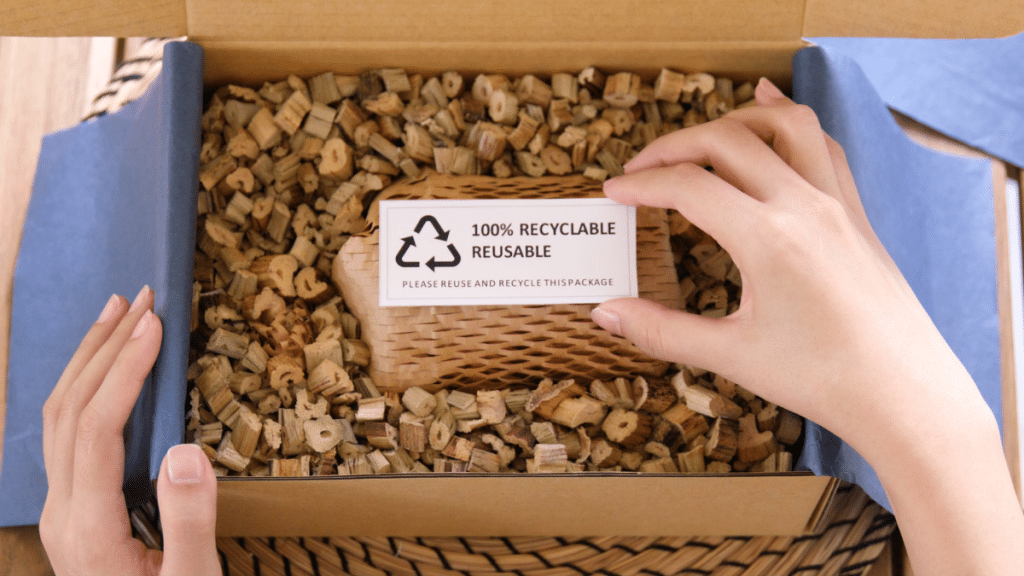The e-commerce industry has experienced exponential growth in recent years, driven by shifting consumer habits and advancements in digital commerce. As online shopping becomes the norm, businesses increasingly focus on sustainable and efficient packaging solutions. Bubblewrap and other packaging materials are evolving to meet these new demands, balancing environmental responsibility with cost savings and improved product protection.
The Rise of Smart Packaging in E-Commerce
Smart packaging is revolutionizing how businesses approach shipping and logistics. By integrating innovative materials and technology, companies can reduce waste, minimize damage during transit, and enhance the overall customer experience. Sustainable packaging solutions are not just beneficial for the environment; they also lead to cost savings, brand differentiation, and stronger customer loyalty.
Sustainable Packaging Materials on the Rise
Businesses are moving away from traditional plastic packaging toward more sustainable alternatives. Some of the most notable trends include:
- Recycled and Biodegradable Materials: Many e-commerce companies are replacing conventional plastic packaging with recycled cardboard, biodegradable plastics, and compostable mailers.
- Paper-Based Alternatives: Paper bubble wrap and corrugated cushioning are gaining popularity as eco-friendly replacements for traditional plastic bubblewrap.
- Molded Pulp and Custom-Fit Packaging: These options reduce waste by eliminating excess materials and improving package density, leading to lower shipping costs.
Bubblewrap’s Transformation: More Eco-Friendly Than Ever
Bubblewrap has long been a staple in protective packaging, but its traditional plastic form posed environmental concerns. Today, businesses are turning to eco-friendly versions, such as:
- Made from post-consumer and post-industrial recycled plastic bubblewrap, with recycled content reduces the need for virgin materials.
- Biodegradable Bubblewrap: Designed to break down more quickly in landfills, minimizing long-term environmental impact.
- Paper Bubblewrap: A highly recyclable alternative that provides similar cushioning without the plastic waste.
How Sustainable Packaging Improves Cost Efficiency
E-commerce businesses are discovering that sustainable packaging is not just a moral choice—it’s also a financial advantage. Investing in smart packaging solutions leads to:
- Reduced Shipping Costs: Custom-fit and lightweight packaging lowers dimensional weight fees and optimizes freight space.
- Minimized Product Damage: High-quality sustainable materials enhance protection, decreasing return rates and associated costs.
- Operational Efficiency: Streamlined packaging designs improve warehouse productivity and order fulfillment speeds.
Enhancing Brand Image Through Sustainable Packaging
Sustainability is now a key purchasing factor for consumers. Brands that prioritize eco-friendly packaging can enhance their image and build stronger customer relationships. Some benefits include:
- Meeting Consumer Expectations: Shoppers are more likely to support brands that demonstrate environmental responsibility.
- Improved Unboxing Experience: Thoughtfully designed, sustainable packaging creates a premium feel and enhances customer satisfaction.
- Regulatory Compliance: Many governments are implementing stricter regulations on single-use plastics, making sustainable packaging a proactive move to avoid future restrictions.
The Role of Industry Leaders in the Shift Toward Sustainability
The packaging industry is adapting to this demand by offering innovative, sustainable solutions. A packaging giant recently noted a surge in interest for biodegradable and recycled packaging options. According to an industry expert, “Businesses are recognizing that sustainable packaging is no longer optional—it’s a competitive necessity. The shift toward smart packaging solutions is helping e-commerce brands cut costs while enhancing customer loyalty.”
Looking Ahead: The Future of Sustainable Packaging in E-Commerce
As the e-commerce landscape continues to grow, businesses will need to prioritize sustainability without compromising efficiency. Key developments to watch include:
- Advancements in Smart Packaging Technology: IoT-enabled packaging that tracks temperature, tampering, and transit conditions.
- Closed-Loop Recycling Programs: Encouraging customers to return used packaging for recycling or reuse.
- Regenerative Packaging Materials: Exploring innovative materials derived from algae, mushrooms, and agricultural waste.
Challenges and Considerations in Adopting Sustainable Packaging
While the transition to sustainable packaging offers numerous benefits, businesses must also address key challenges:
- Initial Investment Costs: While sustainable materials can lead to long-term savings, the upfront costs of switching to eco-friendly packaging can be higher.
- Supply Chain Adjustments: Ensuring a steady supply of sustainable materials and redesigning packaging processes require careful planning.
- Consumer Perception and Education: Some customers may be unaware of the benefits of sustainable packaging, making brand communication essential.
To overcome these challenges, businesses should take a strategic approach by gradually implementing sustainable packaging options, educating customers on their environmental impact, and leveraging government incentives or partnerships with sustainability-focused organizations.
How E-Commerce Brands Are Leading the Way
Many e-commerce giants are setting an example by committing to sustainable packaging. Companies are adopting strategies such as:
- Eliminating Excess Packaging: Reducing unnecessary fillers and switching to right-sized packaging to minimize waste.
- Using Water-Based and Soy-Based Inks: Ensuring that printed packaging remains environmentally friendly.
- Implementing Take-Back Programs: Allowing customers to return used packaging for reuse or proper recycling.
These strategies not only reduce environmental impact but also help companies strengthen their sustainability commitments and improve their corporate social responsibility (CSR) standing.
Consumer Demand for Sustainable Packaging
Studies show that consumers are increasingly prioritizing sustainability when choosing brands. Key findings include:
- 70% of consumers are willing to pay more for environmentally friendly packaging.
- Over 80% of shoppers expect brands to take responsibility for their environmental impact.
- Recyclability is one of the top factors influencing purchasing decisions for online shoppers.
These statistics underscore the importance of adopting sustainable packaging not just as a business strategy but as a response to evolving consumer expectations.
Conclusion
The evolution of packaging materials, such as bubblewrap, is transforming the e-commerce industry. By adopting sustainable and efficient packaging solutions, businesses can achieve cost savings, enhance product protection, and strengthen their brand image. The shift toward smart packaging is not just a trend—it’s a crucial strategy for the future of e-commerce and logistics. Brands that embrace these innovations will not only reduce their environmental footprint but also gain a competitive edge in the evolving marketplace.
As more companies prioritize sustainability, the e-commerce sector will continue to see advancements in packaging technology, materials, and efficiency. Smart packaging solutions are paving the way for a more eco-conscious future—one where businesses and consumers work together to create a more sustainable world.
